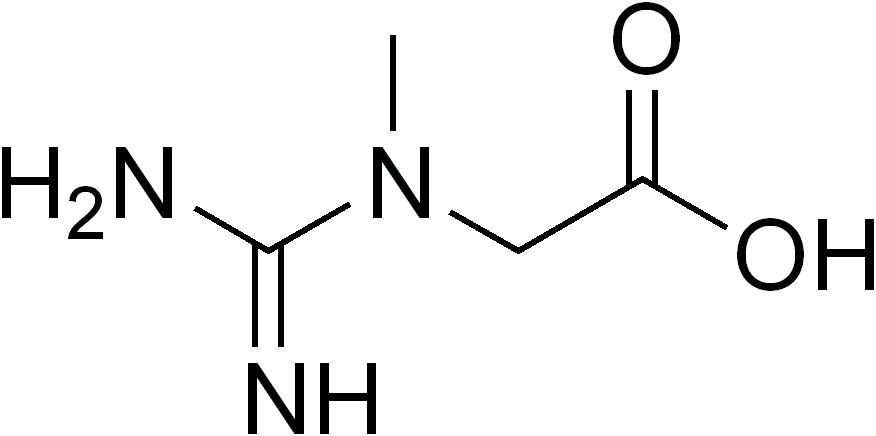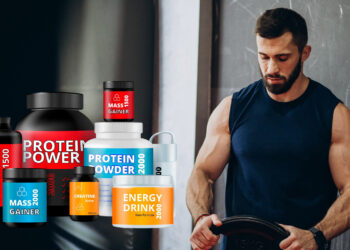Calculate the appropriate dosage of creatine monohydrate for both beginner and advanced weightlifters.
Creatine Dosage Calculator
Recommended Creatine Intake:
Your daily dose for the loading phase is: gram per day
The ISSN (International Society of Sports Nutrition) suggests 5 grams of creatine monohydrate four times daily for 5–7 days is the most effective way to increase your muscle creatine levels (1).
Your daily dose for the maintenance phase is: gram per day
After the loading phase once your muscles are completely saturated, a lower dose can maintain high levels of creatine.
What is creatine and how does it work?
Creatine is quite possibly the most effective ergogenic aid for improving physical performance and body composition. Although, it’s no miracle supplement and shouldn’t be thought of as such. So expectations should reflect this piece of knowledge.
Creatine is actually an amino acid that has been studied for years which makes the proof behind its efficacy even more convincing. But if you’ve ever tried creatine yourself, there’s a good chance you’ve already experienced the benefits.

Now, our bodies naturally produce creatine and it’s found in the muscle and brain, as well as the kidneys, liver, and pancreas. It’s also in red meat and seafood. But if you want the benefits of creatine, you’ll need to supplement (synthetic creatine) because your body doesn’t produce enough and most people won’t get enough from food either.
Creatine converts to a substance called phosphocreatine after it’s consumed and is stored intramuscularly. This process helps supply the muscles with energy to fuel muscle contractions, in the form of ATP (Adenosine triphosphate). ATP is important for chemical synthesis, muscle contraction, and nerve impulse propagation.
How does the creatine calculator work?
The creatine calculator determines an ideal intake for each individual based on their body weight using a simple formula. It’ll give you an optimal intake amount for the loading phase and the maintenance phase. If you’re unfamiliar with what the loading phase is, then let us explain.
Level Up Your Fitness: Join our 💪 strong community in Fitness Volt Newsletter. Get daily inspiration, expert-backed workouts, nutrition tips, the latest in strength sports, and the support you need to reach your goals. Subscribe for free!
Loading phase
Basically, creatine works faster when you take a higher overall dose for the first 5-7 days or so. You’re just saturating the muscles with creatine and as a result, your body is able to elicit the effects at a much faster rate.
So, for example, if the calculator determines that you should take 20g for the loading phase, you’ll split up your doses throughout the day (typically 4 doses of 5g) to ensure you meet this number for the first 5-7 days.
But this phase is not necessary as you can take the smaller, maintenance dose and still get the same effects. However, this is a slower process that will take several additional weeks for comparable effects. (7)
Maintenance phase
The maintenance phase typically follows the loading phase which consists of taking a smaller dose since the muscles are already sufficiently stored with creatine. This is usually about a fourth of the loading phase dose. The maintenance dose should be taken every day following the loading phase to keep the muscles stores at adequate levels.
Maintenance phase formula:
Weight (lb) < 120 = 3g
Weight (lb) < 119 to < 201 = 5g
Weight (lb) > 200 = 8g
The more you weigh, the more creatine you’ll need to take to see maximum benefits. Although, not everyone will be interested in following a specific dosing protocol. So simply taking a dose recommended by creatine product labels can be an effective approach. Research has shown that taking just 3 grams per day is an optimal lower limit for eliciting the beneficial effects of creatine. (8)
Benefits of creatine
Creatine has been shown to contribute to fat-free muscle growth, increased strength, and even endurance activities. But the effects will only be maximally pronounced with resistance training. (1)
But the mechanism/s in which it can help increase muscle growth especially is rather interesting. Research shows that creatine can have an effect on hormones, muscle cells, and other processes. This is in addition to the increased ATP production in the muscle cells. (2, 3)
Having sufficient creatine stores in the body provides benefits beyond the physical and performance factors. Age-related muscle loss and syndromes that are caused by the body’s inability to metabolize creatine effectively, may likely improve from exogenous creatine intake. (4)
Plus, there’s evidence that suggests creatine can be beneficial for staving off neurological disease and improving aspects of brain function. (5, 6)
Creatine is a very beneficial supplemental tool that has impressive effects. But it’s important to not expect it to have steroid-like effects either. Most people who dose it properly will likely gain several pounds in water but this should then follow up with leans mass at a slightly faster rate than if you didn’t use it.
But your workout, nutrition, and lifestyle have to be up to par as creatine doesn’t make up for a lack of optimal habits.
Does the type of creatine matter?
This is where things can get a little tricky. There are several different forms of creatine although monohydrate is the most common and studied form (doesn’t necessarily mean it’s the best, however). Typically, the serving size displayed on most creatine labels is 5 grams. If it’s less than this, we recommend following the label and adjusting based on your results.

Certain creatine products don’t require a loading phase, therefore, just following the product label is likely going to be your best bet. For example, you don’t need to load buffered creatine products such as kre-alkalyn or hcl (hydrochloride), and they’re lower dosed than monohydrate.
So, our creatine calculator may not apply to all creatine types which is something to keep in mind.
Read also: Creatine Ethyl Ester Vs Creatine Monohydrate
Frequently Asked Questions
Was ist Kreatin?
Kreatin ist eine Aminosäure, die vom Körper natürlich produziert wird und auch in bestimmten Lebensmitteln vorkommt. Es hilft bei der Produktion von ATP (Adenosintriphosphat), das die Muskelkontraktionen und andere biologische Prozesse antreibt.
Ist Kreatin ein Steroid?
Nein. Steroide sind illegal, während Kreatin für jeden frei verfügbar ist, sogar für Sportorganisationen.
Baut Kreatin Muskeln auf?
Viele Studien haben gezeigt, dass Kreatin zum Aufbau von magerer Muskelmasse beiträgt. Es wurde auch gezeigt, dass es die Kraft und Ausdauer erhöht.
Abgesehen davon, dass es die Muskeln mit Energie versorgt, hat die Forschung gezeigt, dass Kreatin einen Einfluss auf Hormone hat, die für das Muskelgewebewachstum verantwortlich sind.
How much creatine is safe to take?
Wir empfehlen, nur die empfohlenen Kreatin-Dosen einzunehmen, die in der Regel auf den Produktetiketten angegeben sind. Je nach Form des Kreatins können Sie jedoch unseren Rechner verwenden, um eine für Sie optimale Menge zu ermitteln.
Die Einnahme von mehr als den empfohlenen Dosierungen führt nicht zu besseren Ergebnissen. Aber selbst wenn Sie mehr als die empfohlenen Dosierungen einnehmen würden, wären Sie wahrscheinlich in Ordnung. Laut der International Society of Sports Nutrition (ISSN) sollte die Einnahme von bis zu 30 g pro Tag über fünf Jahre bei gesunden Personen keine negativen Auswirkungen haben. (7)
Ist Kreatin für jeden sicher?
Wir empfehlen definitiv nicht jedem die Verwendung von Kreatin. Besonders nicht Personen mit ernsthaften gesundheitlichen Problemen.
Menschen mit Nierenproblemen (z.B. Nierenerkrankungen) sollten auf jeden Fall die Verwendung von Kreatin vermeiden, da es von den Nieren verstoffwechselt wird.
Für gesunde Personen gilt Kreatin allgemein als sicher, sowohl kurz- als auch langfristig.
Als Sicherheitsvorkehrung ist es auf jeden Fall eine gute Idee, vor der Verwendung von Kreatin in Supplementform Ihren Arzt zu konsultieren.
Final Thoughts
Creatine works plain and simple. It’s proven and if you’re healthy, then it can really be a big help for your fitness goals. Our calculator should help you to find an effective dosing range so that you can see the results as quickly as possible.
Just remember that not all creatine products are created equally. But we’ve explained the difference and why the calculator may not be needed depending on your choice of product.
Also try our other calculators:
- LBM Calculator
- TDEE Calculator
- Carb Cycling Calculator
- Intermittent Fasting Calculator
- Water Fasting Weight Loss Calculator
- Macro Calculator
- Wilks Calculator
- Body Fat Calculator
- EER Calculator
- Weight Loss Percentage









All are good guidance